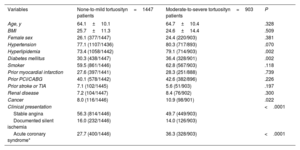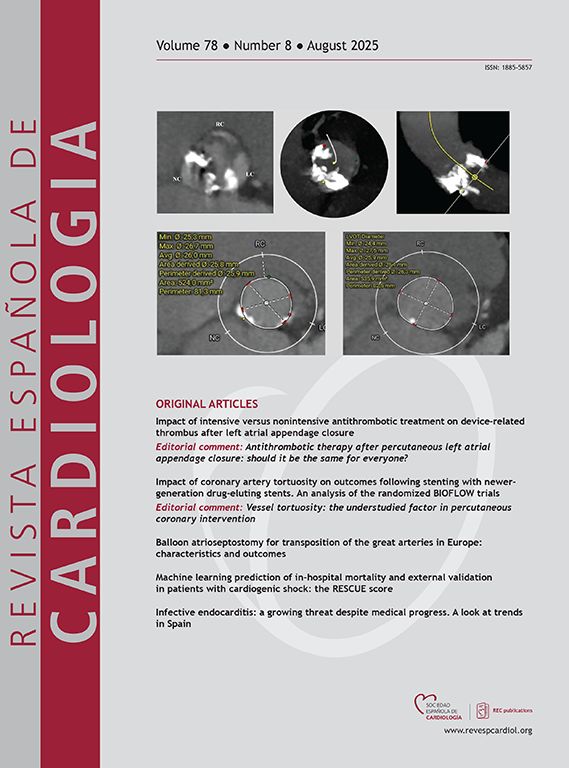
Patients undergoing percutaneous coronary intervention in vessels with moderate-to-severe tortuosity are at higher risk of adverse outcomes, but data are scarce in the era of newer-generation stents. We compared outcomes following percutaneous coronary intervention in vessels with moderate-to-severe tortuosity using a bioresorbable-polymer sirolimus-eluting stent (BP-SES) vs a durable-polymer everolimus-eluting stent (DP-EES).
MethodsA total of 2350 patients from the BIOFLOW II, IV, and V randomized trials were stratified into 2 groups based on target-vessel tortuosity: none-to-mild and moderate-to-severe. The primary endpoints included target lesion failure (TLF)—a composite of cardiac death, target-vessel myocardial infarction (TV-MI), or ischemia-driven target lesion revascularization (TLR)—and probable/definite stent thrombosis at 3 years.
ResultsPatients with moderate-to-severe tortuosity (n=903) had more comorbidities than those with none-to-mild tortuosity (n=1447). Rates of TLF (P=.354), cardiac death (P=.690), TLR (P=.447), and stent thrombosis (P=.084) were similar between the 2 groups, whereas TV-MI occurred more frequently in the moderate-to-severe tortuosity group (P=.031). However, on multivariate analysis, moderate-to-severe tortuosity was not an independent predictor of TV-MI (adjusted HR, 1.06; 95% CI, 0.72-1.55; P=.772). Among patients with moderate-to-severe tortuosity, the use of BP-SES was associated with significantly lower rates of TLF compared with the DP-EES (7.8% vs 13.4%; HR, 0.57; 95% CI, 0.37-0.87; P=.009), driven by reductions in TV-MI (5.0% vs 9.2%; HR, 0.54; 95% CI, 0.32-0.90; P=.018) and TLR (2.7% vs 6.1%; HR, 0.45; 95% CI, 0.23-0.90; P=.021).
ConclusionsThis pooled analysis of the randomized BIOFLOW trials demonstrates that patients with none-to-mild and moderate-to-severe tortuosity have comparable long-term adverse event rates. However, the use of BP-SES in patients with moderate-to-severe tortuosity may help mitigate potential ischemic risks.
Clinical trial registration: Clinicaltrials.gov NCT01356888, NCT01939249, NCT02389946.
Keywords
Identify yourself
Not yet a subscriber to the journal?
Purchase access to the article
By purchasing the article, the PDF of the same can be downloaded
Price: 19,34 €
Phone for incidents
Monday to Friday from 9am to 6pm (GMT+1) except for the months of July and August, which will be from 9am to 3pm







